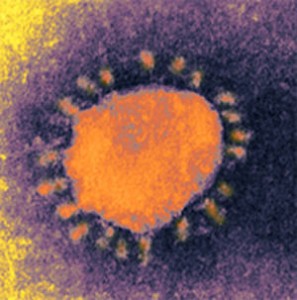Coronavirus refers to a relatively small group of viruses that were first identified in the 1960s from the respiratory tracts of humans. Over the course of time, it was recognized that coronavirus infection is quite common in humans, as well as in some other animals, although those viruses do not always have the ability to infect humans. In fact, infection with coronaviruses was found to be practically universal with most every person having been infected with at least one of the known coronaviruses, usually in childhood. In most all cases the result was a common cold that resolved on its own in about a week, although in some very rare cases more serious complications developed although this was exclusively in people already suffering from other medical conditions. The world view of coronaviruses changed dramatically in 2003 with the appearance of Severe Acute Respiratory Syndrome (SARS) and has continued to evolve with the 2012 recognition of Middle Eastern Respiratory Syndrome (MERS), both of which are caused by novel variants of coronaviruses.
Emergence of the Coronaviruses
Few viruses moved from relative obscurity, of interest only to a handful of virologists, to worldwide infamy quite as quickly and dramatically as did the coronaviruses beginning in 2003. As noted, prior to that time, the coronaviruses were not known to cause anything more severe than a common cold. It was known that coronaviruses could also infect other animals, most notably chickens, but there were no known cases of these animal variants crossing over into humans and causing disease.
Until 2003 there were four known types of coronavirus that infected humans. With the discovery of SARS, the number climbed to five, and the recent discovery and description of the virus that causes MERS brings the total to six. 
SARS
SARS first appeared in China, in the southern regions, although the outbreak was kept secret from the outside world for some time, until travelers from the region began spreading the infection throughout the world. The outbreak would sicken over 80,000 people and almost 10% of them would ultimately die of pneumonia or other complications associated with the infection. Patients presented with high fevers, general weakness and ill feeling, along with respiratory distress, which worsened over time. Additionally some patients, about 10%, also had gastrointestinal symptoms. SARS could easily be confused with seasonal influenza based on symptoms alone.
SARS spread rapidly between people through direct respiratory droplets and through contact with shared surfaces that had become contaminated with the droplets from infected persons. The disease was able to spread worldwide through airplane passenger travel, causing a panic among travelers and healthcare providers alike.


